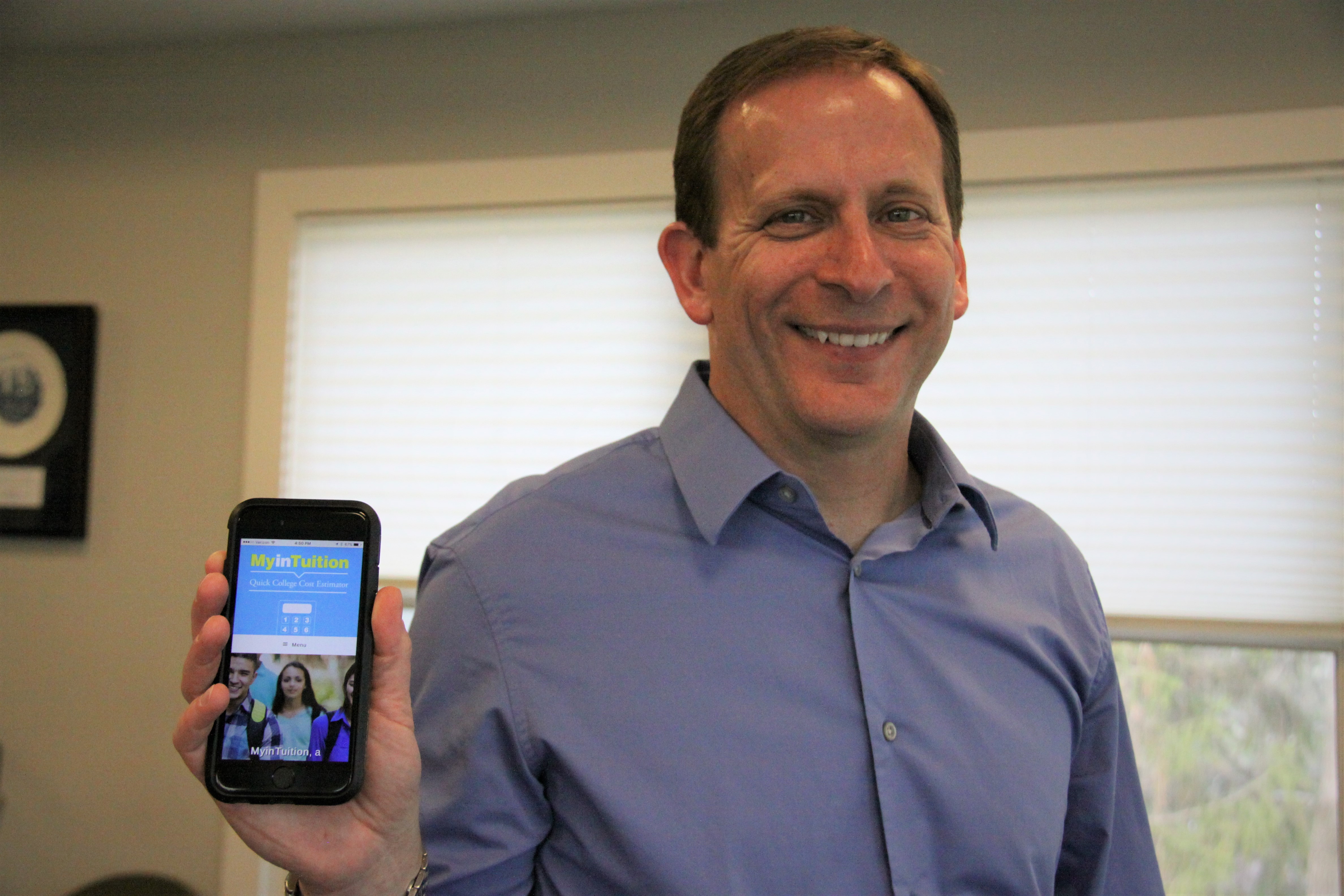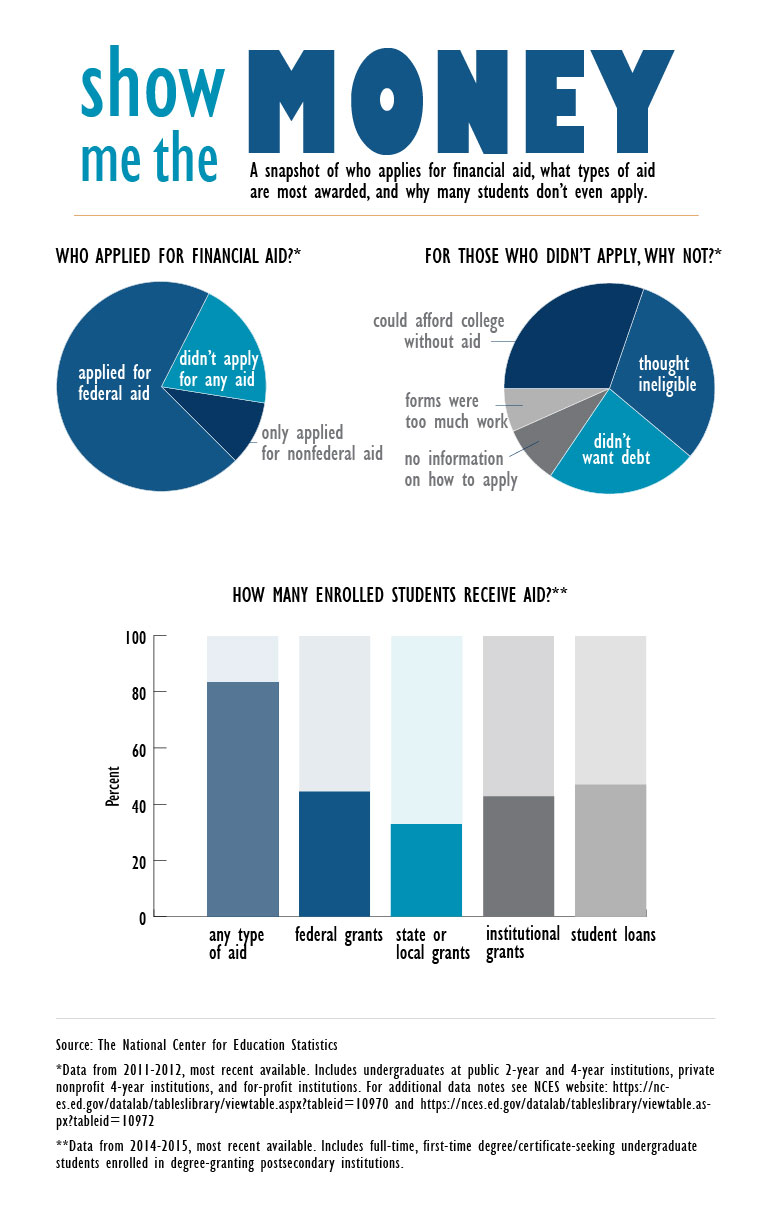By Kirk Carapezza

It’s a dizzying time for high school seniors making their college decisions, but the next step — calculating how much it’s all going to cost — can be even more mind-boggling.
Now, a handful of selective schools are trying to make the true price of college a little more transparent with a new online tool.
When Kisha James was looking at schools, she assumed private liberal arts colleges were way too expensive.
“I was just thinking, ‘Oh my God, I am never going to pay off my student loans. I am going to die owing money to a bank,’” Kisha, 18, said.
Kisha was intimidated by $70,000 sticker prices, and she worried about the debt she’d incur.
But, last summer, she went to a college prep class for Native American students, and a guidance counselor there introduced her to a new online calculator called MyinTuition designed to give families a quick, ballpark estimate of what college is going to cost them.
“I actually did it three times because I thought it made a mistake when it said that I would only have to pay zero dollars for college,” she recalled. “I was like, ‘Something is wrong.’ I just sat there in shock.”
So, Kisha emailed the link to her mom, Mahtowin Munro, and asked her to give the calculator a shot.
“It asked you your annual income,” Mahtowin explained. “How many people in the household. It asked you if you have any other kids who are going to be in college. I think it asked if you own a home or if you have any assets . That was pretty easy for us because we don’t own a home or have assets.”
“It was very straightforward and very quick and bingo you have an answer,” she added.
The calculator estimated that their total family contribution would, in fact, be zero.
While many high-achieving, low-income kids never apply to selective colleges because of the sticker price, the calculator helps them see they’d pay far less because of financial aid. It can also help more prosperous families figure out how much they’re going to have to save or borrow to pay for college.
The online tool is the creation of Phillip Levine, who teaches economics at Wellesley College.
“I was starting to think for myself how am I going to be able to afford to pay for college,” Levine said, explaining how it all started about a decade ago when his kids were looking at schools.
“I have a good job but even for me $70,000 a year is a lot of money,” Levine said. “So I wondered whether I was eligible for financial aid, and it didn’t take very long before I realized that it was next to impossible to figure out that question. Even for me, and I’m pretty good at that sort of thing.”
When Levine first launched his calculator a few years ago, it was only available to prospective Wellesley students. Then, this year, he invited nearly 70 schools to adopt it. Fourteen said yes, pledging to increase the number of low-income students on campus. The expansion comes as a new report by Georgetown’s Center on Education and the Workforce finds that the country’s most elite universities could enroll many more low-income students, without hurting their graduation rates or bottom lines.
There’s one public school — the University of Virginia — but the rest are expensive private schools, like Williams, Columbia and Pomona.
Levine points out that all of the schools have “a very strong commitment to financial aid.” Dozens of schools passed on his offer to participate , perhaps afraid of what the calculator would spit out, but many now tell him that they plan to use it in the future.
Right now, the calculator seems to be working for some schools that have already adopted it.
“It certainly is contributing to the increase in applications,” said Joy St. John, Wellesley’s dean of admissions, who reports applications are up this year by about 17 percent with the majority of that increase coming from students needing financial aid.
“We know that we’re not getting all of the qualified students that we could be getting and we know that some of those students – the reason that w e’re not getting them in the pool is because – they don’t understand what the real cost of Wellesley is,” she said.
Other admissions directors agree.
Julie Browning is the dean of undergraduate enrollment at Rice University in Houston, Texas, where 17 percent of the students receive federal Pell grants. This spring, Rice adopted Levine’s calculator.
“It’s just demystifying this college search process which can often intimidate families,” Browning said. “Once I used the tool myself, I could see the logic behind it. It is very user-friendly. It’s confidential. You don’t have to have your tax returns and stacks of papers to get to a good estimate.”
Browning says Rice is committed to recruiting and enrolling more low-income students.
“We see room to grow, not only with Pell-eligible kids, but with those students who aren’t quite as disadvantaged as a Pell-eligible student but still eligible for need-based aid,” she said.
Earlier: How One College Increased Diversity By Focusing On Class
Levine is also working with nonprofit organizations like College Horizons, which matches Native American students with selective colleges.
Carmen Lopez, executive director at College Horizons, says the ability to calculate the net price — rather than the sticker price — should help steer college decisions.
“If you don’t understand what you might have to pay, you might say, ‘There’s no way my parents can afford that. I’m not even going to go for it. I’m only going to stick to the colleges near me that I think are less expensive,’” Lopez said.
And, Lopez adds, there are plenty of low-income students like Kisha James who have the academic ability to compete at selective schools.

Last month, she was accepted and the college gave her a very generous financial aid offer.
She says the calculator was accurate: Her family contribution is zero.
Next fall, she’ll only have to contribute a portion of her summer and work study earnings.
“My financial aid form that came after I got accepted was pretty much identical to what I got [through the calculator],” Kisha said. “Crazy reasonable.”
